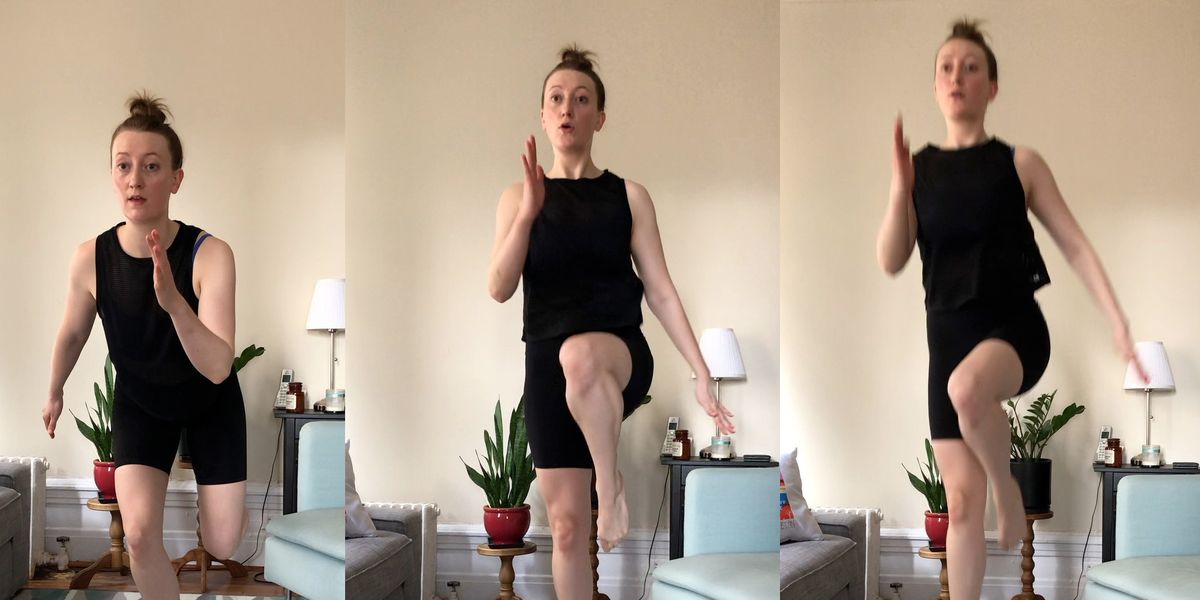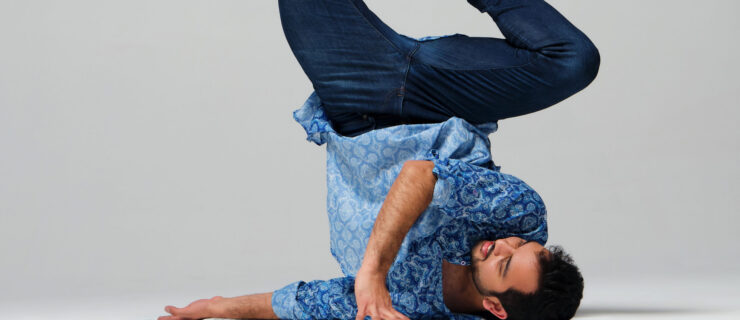How to Maintain Your Jumps During Quarantine
There are some things you just can’t do at home, whether due to lack of space, less than ideal floors, or fear of upsetting your downstairs neighbors. Jumps rank high on that list, and any dancer knows that the power and precision required for difficult jumps is one of the first things we lose in a period of lighter training.
But don’t despair—even if you can’t do a full grande allegro in your living room, you can still keep working on your jumps at home.
As a personal trainer and a dancer, these are some of my favorite exercises to help maintain or build power, strength and control for jumps. They don’t need to be done all at once—feel free to pick two or three and save the others for another day.
You need to be fully warm before attempting these exercises. They’re perfect to tack on to the end of a home class or home workout. (If you need some ideas, try these exercises you can do with household objects like a towel or your couch.) Some of the exercises don’t involve jumping at all. The ones that do can either be done outside with shoes on or be modified to a relevé.
1. Dead stop jumps
Start seated, with your arms overhead and feet lifted off the floor. In one motion, place your feet on the floor parallel to one another and drive yourself up into a jump, drawing your arms down by your sides. Land in a squat position. Hold for a few seconds before resetting.
If needed, modify by springing up to relevé instead of jumping.
Do 1-3 sets of 5-8 reps.
Tips and tricks:
Try to maintain a neutral spine the whole time. Note that you are jumping and landing from a squat position as opposed to just your plié, so make sure you hinge at the hips in addition to bending your knees at takeoff and landing. Whether you do the jumping version or the relevé, remember that this is meant to be explosive. You should be moving as quickly as you can while maintaining control.
Why it works for dancers:
This is meant to help you build the kind of maximal power you need for your biggest jumps. Starting at a “dead stop,” with your feet off the floor, means you don’t have momentum to help you. This requires the muscles in your lower body to generate more force, helping improve your jump height.
2. Springing lunges
Do 1-3 sets of 5-8 reps each side.
Tips and tricks:
Make sure your front knee tracks over your toes. Control your landing so you don’t smack that back knee on the floor! Work on rolling through the foot on takeoff and landing.
Why it works for dancers:
This exercise will help you build power and endurance in your glutes, quads and calves—all the muscles you need for jumping. It also gives a chance to work on articulating your feet at high speeds.
3. Jump landings
Do 3-5 sets of 6-12 reps.
Tips and tricks:
Make sure knees track over toes and heels come all the way down to the floor. Watch out for any excess movement of your torso. Remember, you’re trying to simulate a jump landing, so the descent should be fast. This is not the slow lowering you might aim for in a different exercise.
Why it works for dancers:
Landing mechanics are one of the most important elements of a jump. Injuries usually occur on landing, not takeoff, so this is an opportunity to drill safe, controlled, consistent landings, and look out for bad habits like placing more weight on one foot than the other or losing control of the upper body.
4. Skater jumps
Do 1-3 sets of 3-8 reps each side.
Tips and tricks:
Make sure your knee tracks over your toe, and roll through the foot on takeoff and landing. Try to keep the hips level and square.
Why it works for dancers:
This is all about your power and control on one leg. We all have one side that’s stronger or more coordinated than the other, and this exercise is helpful for addressing that. Knee injuries most often occur in single-leg jump landings, so this is a great preventive exercise.
5. Half relevé
Do 1-3 sets of 5-10 reps.
Tips and tricks:
Make sure the weight stays over your first and second toe. This exercise should feel pretty bouncy, which may be different from what you’re used to. Try not to linger at the bottom—spring back up as quickly as you can.
Why it works for dancers:
Slow, controlled relevés are great for building calf strength and endurance. This exercise has a different purpose: to help you with that initial spring off the floor, which is especially important in exercises like petit allegro. You’re drilling your reactivity and speed, so don’t slow yourself down by lifting too high.




